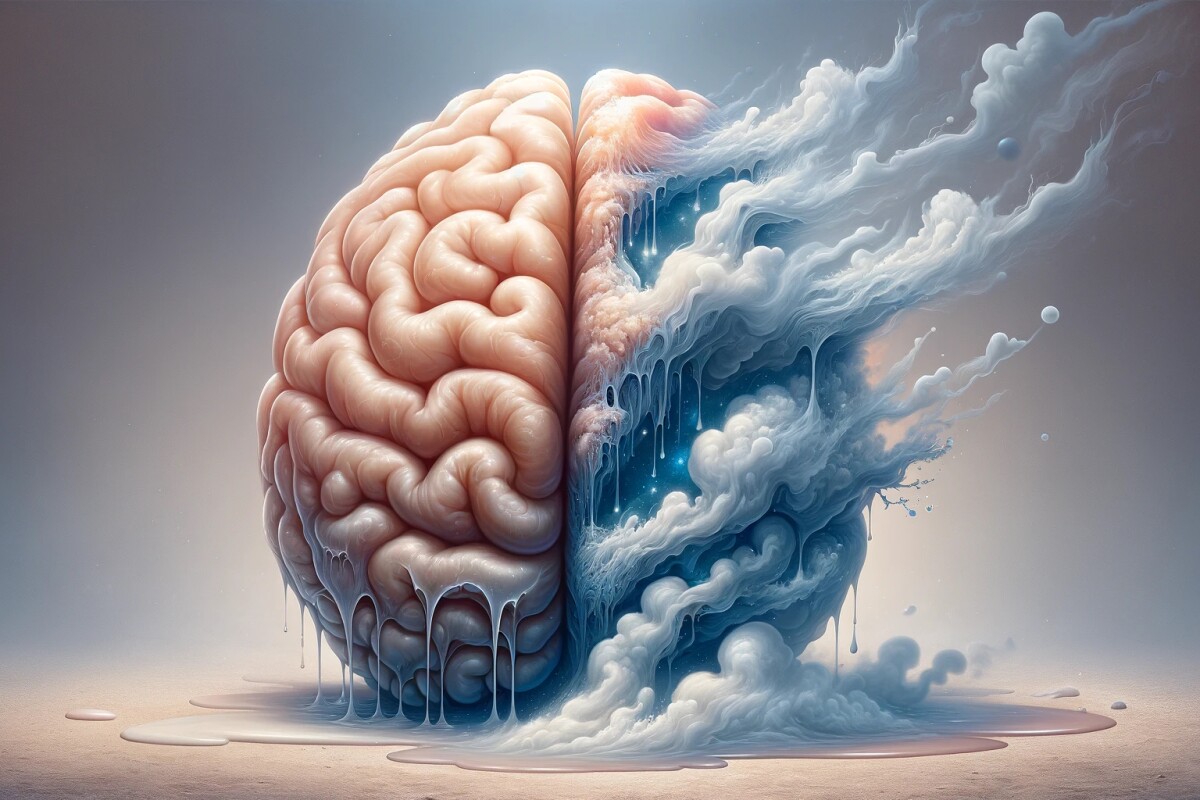
Really interesting this when you add the perspective of the underlying DARK MATTER MATRIX scaled far below all this and whose information density is multiple orders of magnitude more dense. It is also deeply ordered supporting digital processing.
Thus it follows that it is all locked and cocked awaiting a photonic signal.
Understand that the underlying processing is the main event and what we see are reactions to its signaling.
Our brain matter is stuck at a phase transition, says new study
June 11, 2024
The brain is in a perfectly balanced state that keeps it from transitioning to a gas or liquid says new research (Image generated using AI tools)
https://newatlas.com/biology/brain-phase-transition/?
Based on fractal patterns in neurons, researchers believe our brains exist at or near a state called criticality where they're extremely close to shifting from one state of matter to another. They also admit they don't know what either state is.
You might think your brain is pretty solid, but new research says it's composition might not be so straightforward. Scientists at Northwestern University have identified components of neurons that match up to materials undergoing a phase shift – a transition from one state of matter, like a liquid, to another, like a gas.
MORE STORIES
"The structure of the brain at the cellular level appears to be near a phase transition," said Northwestern's Helen Ansell, the first author of a paper about the finding. "An everyday example of this is when ice melts into water. It's still water molecules, but they are undergoing a transition from solid to liquid. We certainly are not saying that the brain is near melting. In fact, we don't have a way of knowing what two phases the brain could be transitioning between. Because if it were on either side of the critical point, it wouldn't be a brain."
To reach the conclusions put forward in the paper, which was just published in Nature Communications Physics, Ansell and colleague István Kovács, looked at publicly available 3D brain images of humans, mice and fruit flies. Looking at these images at the nanoscale, they discovered that brain tissue exhibits traits of universal scaling known as criticality, the point at which a material is either about to – or already undergoing – a change from one state of matter to another.
One of the main indicators of this that the researchers focused on is the fact that brain cells at the nanoscale display fractal patterns that are "self similar." This means that a small part of the pattern resembles the entire pattern. The researchers also found broad size distributions among neurons and variety in different neuron segments.
"These are things we see in all critical systems in physics," Kovács said. "It seems the brain is in a delicate balance between two phases."
Surprisingly, the hallmarks of criticality were seen in both the rat and fruit fly brains, in addition to the human brain tissue. That could point to some kind of phase change quality of all brains, say the researchers.
"Initially, these structures look quite different – a whole fly brain is roughly the size of a small human neuron," Ansell said. "But then we found emerging properties that are surprisingly similar."
"Among the many characteristics that are very different across organisms, we relied on the suggestions of statistical physics to check which measures are potentially universal, such as critical exponents. Indeed, those are consistent across organisms," Kovács said.
The researchers say their findings could help reshape statistical models of the brain and possibly inform the development of neural networks in computers. They also say they will continue their research and look at different organisms to see if the state of criticality more universally applies.


No comments:
Post a Comment